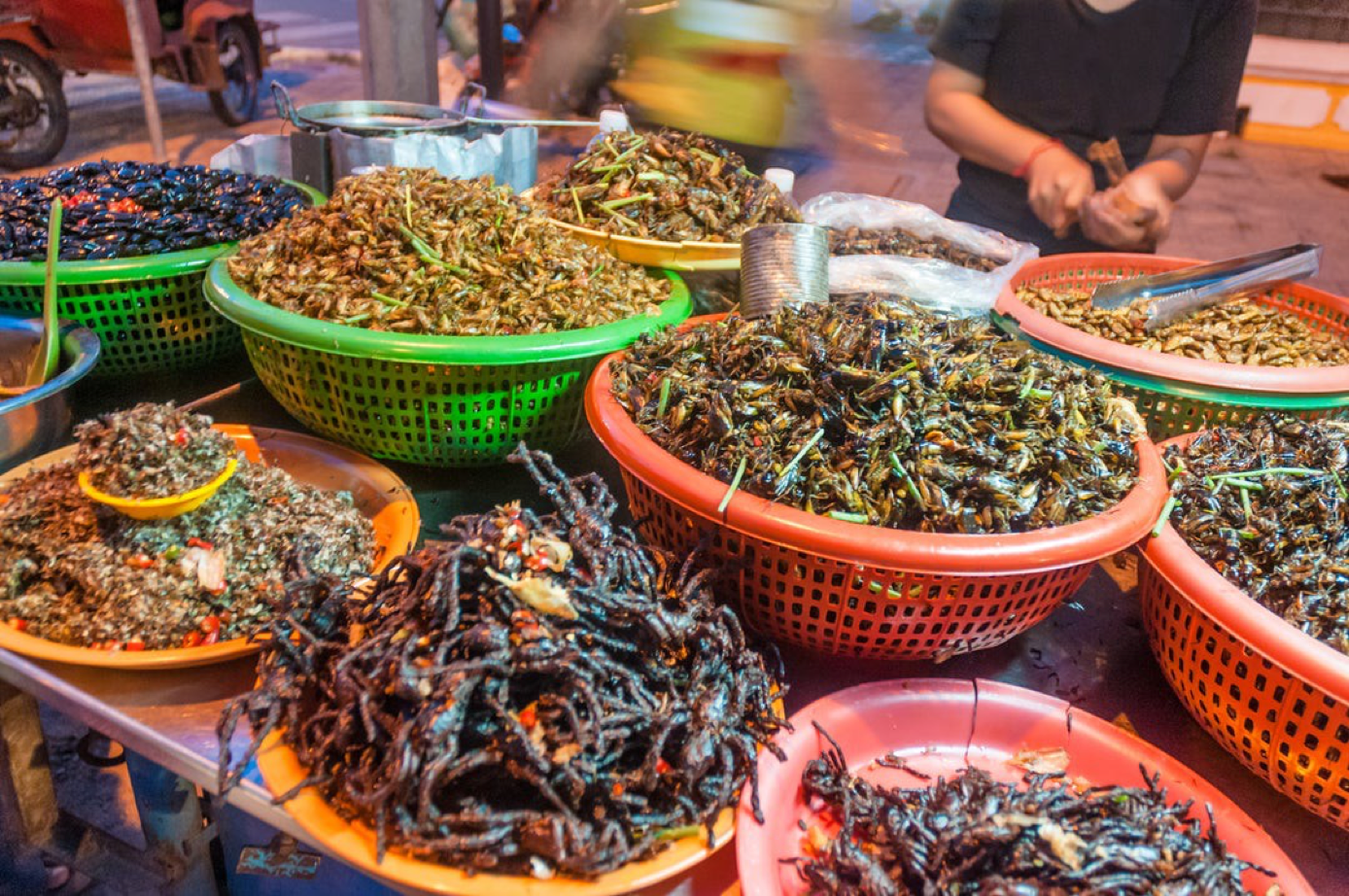For years, edible insects have been billed as the next sustainable food revolution. Daisy Dunne explores why we still haven’t developed a taste for grub
“Mealworms are very versatile. They have a nutty taste,” says Tiziana Di Costanzo, co-founder of Horizon, a small-scale edible insect farm in London. Di Costanzo and her family started farming mealworms in their 30-square metre shed around two and a half years ago. The business now sells live mealworms and dried crickets to customers in the UK.
“For us, everything we do is with the view of preserving the natural environment,” she says. “Our utopian view was that other people would do the same as us and we would have lots of little urban insect farms like Horizon. But that hasn’t really been catching on very well.”
The farming of insects for food has been billed as the next sustainable food revolution in western countries many times over in the past few years. One reason for this is, compared with traditional livestock such as beef and lamb, insects require far fewer resources and produce fewer greenhouse gas emissions.
“Insects can be raised on a fraction of the water, feed and space required by traditional livestock,” says MacKenzie Wade, a PhD student studying perceptions of edible insects at the University of California, Santa Barabara.
Currently, the rearing of livestock accounts for around 14.5 per cent of global greenhouse gas emissions, according to the UN’s Food and Agricultural Organization (FAO).
The production of red meat is particularly polluting. The main reason for this is because cows and sheep are “ruminants” – meaning they belch out large amounts of the greenhouse gas methane when digesting food. In addition, livestock production requires large amounts of forested land to be cleared to create space for grazing cattle or to grow animal feed, which causes further greenhouse gas emissions to be released.
By comparison, insects can be reared almost anywhere, including urban back gardens. Mealworms and crickets can be eaten whole, meaning no part of the animal is wasted. On small-scale farms such as Horizon, wastage can be reduced even further, Di Costanzo says.
“We are a circular business,” she explains. “We take surplus vegetables from a couple of our local food shops and we use that feed for the insects. We also take the ‘frass’, which is the excrement, and sell that as well.”
A poll carried out in 2019 found that nearly one-third of people in the UK believed that edible insects would eventually become part of their diets.
But edible insects are still far from being a staple part of mainstream diets in western countries, says Wade. In a recent analysis published in Environmental Research Letters, Wade and a colleague explore some of the reasons why.
“What we consider ‘good’ to eat is culturally learned,” she says. “We are taught from a young age what food is acceptable, tasty and nutritious and these foods become familiar to us.
“The cultural knowledge we often receive about insects from a young age is that bugs are pests and carriers of disease.”
When insects do appear as food in western pop culture, it is usually only in dystopian movies, she says, or on game shows, the most famous example in the UK being I’m a Celebrity… Get Me Out of Here!
Despite a western aversion to eating insects, they have traditionally been a staple part of the diet in many parts of the world, she adds. “There is a long history of insect eating in the tropics because insects are often more available, larger and nutritious than in colder or more temperate zones, making them a better food source.”
Most visitors to Horizon come looking for a new experience, says Di Costanzo. “You have to be a bit curious and adventurous with your tastebuds to try insects. But people generally are pleasantly surprised after they’ve eaten them.”
Research shows that a global switch to eating less meat and more fruit and vegetables will be key to tackling emissions from agriculture.
For those that have switched to eating less meat for environmental reasons, insects could offer an additional way to get key nutrients, says Wade. “Insects provide much of the nutrients required to maintain a vegetarian diet like iron, protein and vitamin B12,” she says.
If insect eating is to become more widespread in western countries, it will need to move beyond being seen as a fad, Wade says.
“If insects are going to truly be a sustainable food, they need to replace our meat products,” she says. “They also need to be reasonably priced to ensure everyone can access sustainable and nutritious food, which would most likely require subsidies as the industry grows.”
However, it is worth noting that, without careful planning, the future development of insect farming in western countries could come with some of the same environment concerns as large-scale animal agriculture, she adds.
“The main concern is that edible insect production will simply fall into the same pitfalls as other forms of industrial agriculture and rely heavily on, for example, fossil-fuel dependent supply chains, unsustainable feed sources, and highly processed product additives,” says Wade.
“Because the industry is so new in Europe and North America, measures must be taken to ensure growth of the industry follows sustainability goals.”




